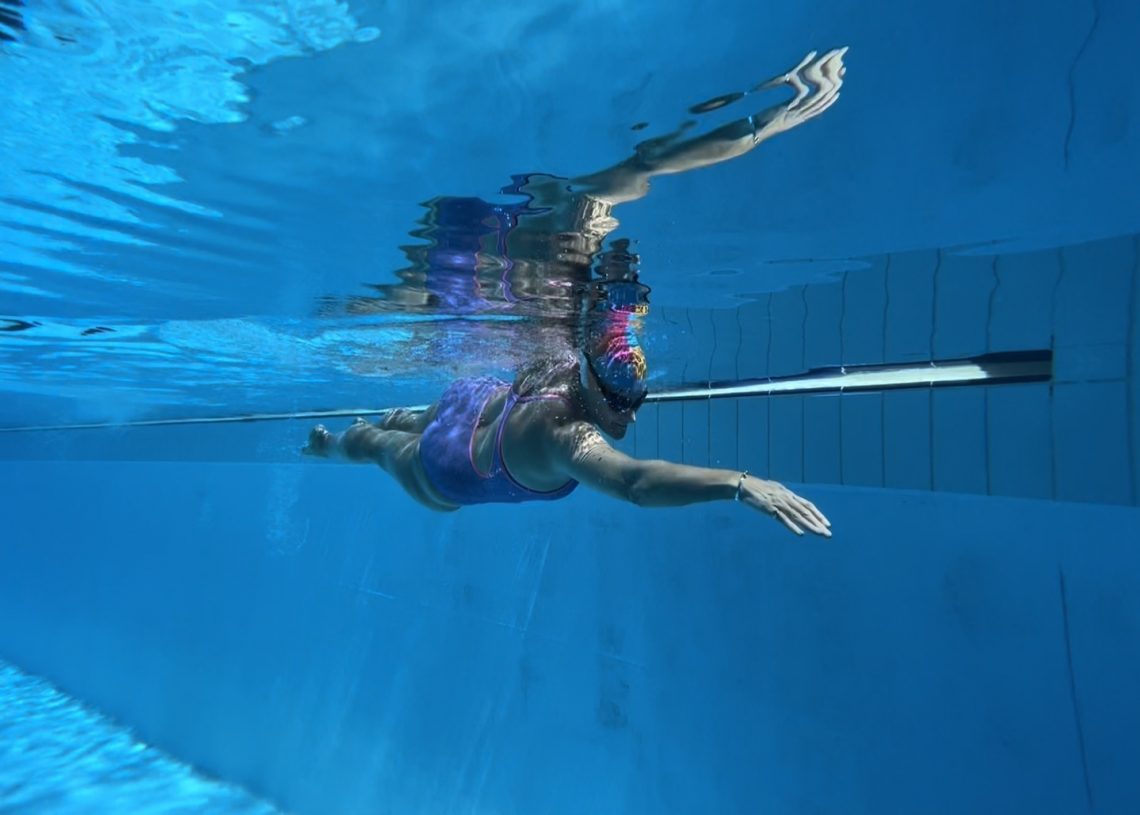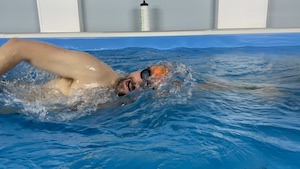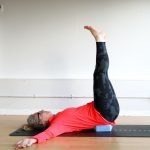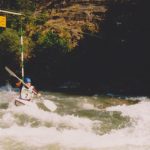
How to achieve a seamless front crawl stroke
Are dead spots slowing you down? Swimming coaches Tracey Baumann and Emma Levy explain how to achieve a seamless front crawl stroke
Have you ever been at the pool and looked across to the lane next to you and seen a swimmer moving seamlessly through the water, with no splash, and no noise? They seem to be flowing through the water effortlessly in one continuous motion.
It is a thing of beauty, and something we all strive to achieve. There is nothing better than being tapped on the shoulder by another swimmer in the pool and have them tell you that they love your front crawl stroke and ask where you learned it. This very scenario happened to one of my swimmers just a few weeks ago, and he was beaming with joy as he told me about the conversation. Seamless swimming is noticeable, and it is this perpetual motion of the stroke that will make you the most efficient swimmer.
However, it is very common to see swimmers with lots of dead spots, or deceleration points, in their front crawl stroke in pools around the world. Any part of the stroke that causes you to decelerate, even a little, is an area to work on. Let’s consider three common areas where dead spots occur.
During the breathing stroke
Because of our survival instinct, it is very easy to create a dead spot during the breathing stroke.
Swimmers often turn towards the air too late, causing them to lift the head too far out of the water and press down on the streamline arm. At this moment physics is working against the swimmer, because the weight of the head coming up out of the water (8% of body weight) causes the rest of the body to start sinking down towards the bottom of the pool.
The streamline arm creates a bracing motion to try and counter this (usually subconscious) sinking feeling. This only serves to make the swimmer sink further downward because they have changed their direction of travel from forwards to downwards and upwards.
The swimmer will often also brace with the legs and splay them in an attempt to stabilise the body during the breathing stroke. All of these stabilising movements cause a huge amount of resistance in the water and result in deceleration at that moment.
During the switch point
Stroke timing, or synchronisation, is the most important part of the learning cycle to achieve the magic of perpetual motion. Many drills have been created to try and help swimmers achieve a perfectly timed stroke, but still we often see swimmers switching either too early or too late.

Windmilling, where a swimmer spins both arms as fast as they can in an attempt to generate and maintain perpetual forward motion, is one strategy that can work for short distances. But it is very tiring and not very efficient and therefore not recommended unless competing in a 50m sprint.
The opposite of this, where the swimmer glides out in front for too long, looks almost like a catch-up stroke; the swimmer hits their streamline position and then waits in that streamline position for too long, usually until the other arm has already entered. They then have to rely on a big explosive pull and kick to get them round and forward to the next streamline position. This massively decelerates the stroke and requires the swimmer to rely on smaller muscles to get them round to the other side. This is also very tiring and not efficient.
You may be using stroke count as a way to measure your progress in the pool, as in examples in our recent articles. When looking for the right switch point, it’s important to remember that you are not looking for your lowest possible stroke count, but for the perfect combination between stroke count, tempo and rate of perceived effort (RPE).
At the beginning of rotation
Another common point of deceleration is at the moment when a swimmer is about to begin their rotation. At this point they wind up their body ready to fire round into their next streamline position. What often happens is that the body over-rotates as one leg pulls back and the catching arm gets ready to apply pressure, and then the swimmer fires and shoots forward into the next stroke. This causes increased resistance and obvious deceleration as a result.
Next time you are in the water, notice which of these dead spots you are creating in your stroke. What can you change that will take you closer to a seamless, perpetual forward motion stroke that may even lead to compliments from other swimmers?
Tracey Baumann and Emma Levy are swimming coaches for SwimMastery. For more guidance on swimming techniques, click here.









